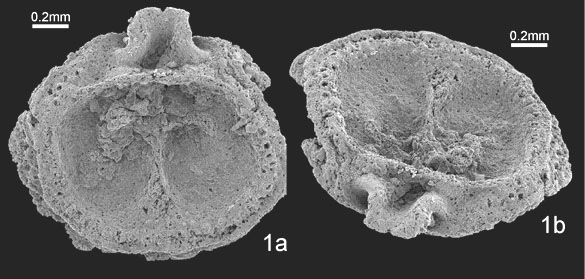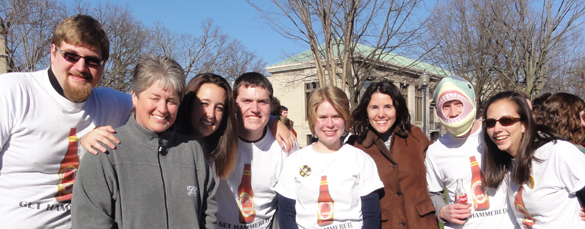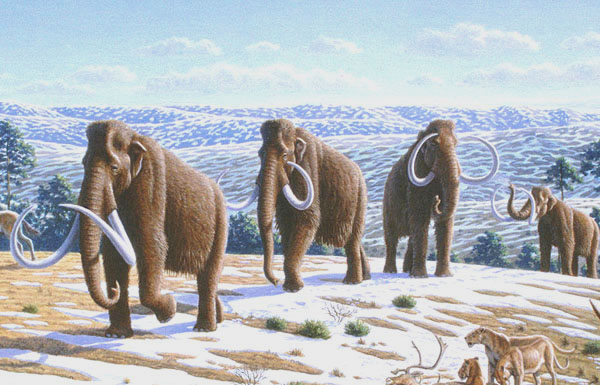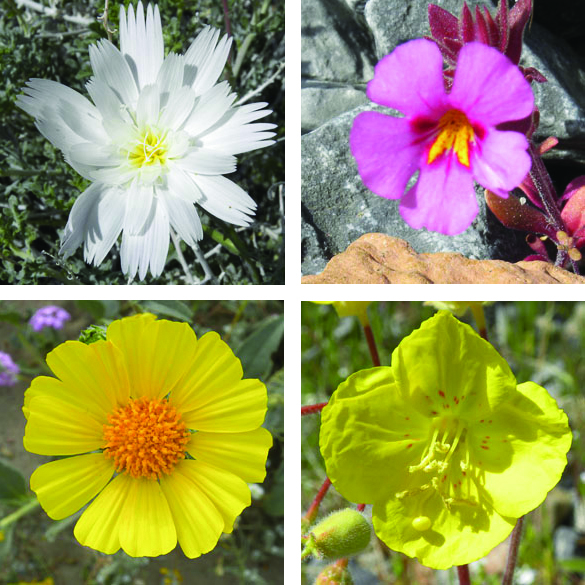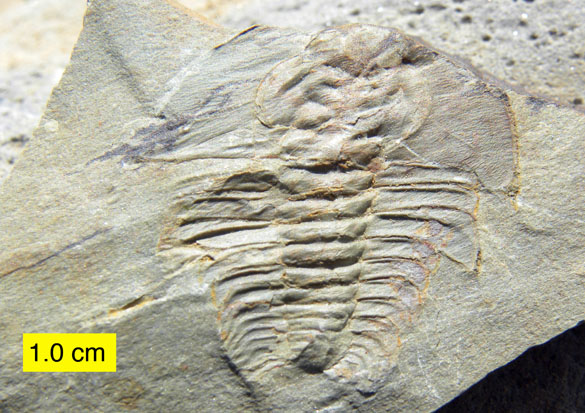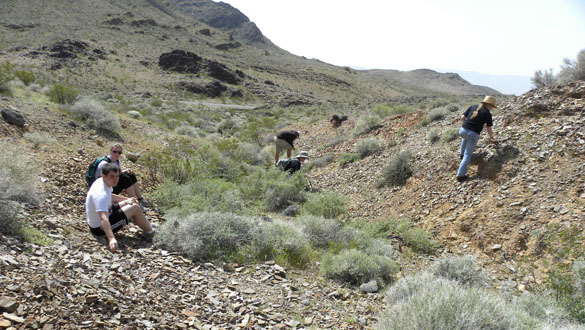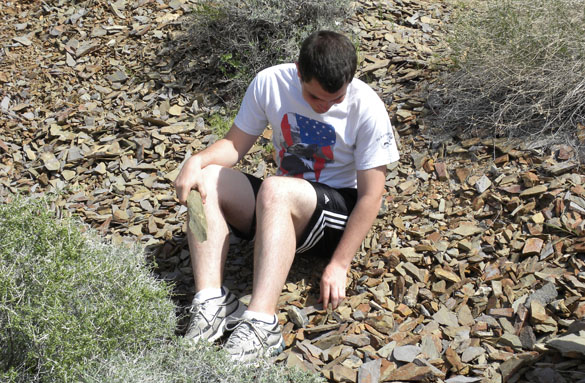Moorellina negevensis Krawczyński & Wilson 2011; 1a – general view of the dorsal valve interior; 1b – oblique view showing brachial cavities and cardinalia.
This week our fossil star is a new brachiopod species a Polish colleague (Cezary Krawczyński — a brachiopod expert) and I described in this March 2011 paper:
The first Jurassic thecideide brachiopods from the Middle East: A new species of Moorellina from the Upper Callovian of Hamakhtesh Hagadol, southern Israel. Acta Geologica Polonica, Vol. 61, No. 1, p. 71-77. [Free pdf available on that site.]
These tiny shells of Moorellina negevensis encrust corals and sponges in the Matmor Formation (Lamberti Zone, Upper Callovian, Middle Jurassic) in the Negev Desert of southern Israel. (Our species name means “from the Negev”.) They are prominent members of a diverse sclerobiont assemblage including tubeworms, oysters, bryozoans and various borings. Several specimens were collected over the past few years of our Wooster work in Israel. Wooster student Will Cary and I will return to these outcrops in Israel this summer for further Jurassic work.
Moorellina negevensis is among the smallest of adult brachiopods, averaging only about two millimeters in width. It is the first species of the Order Thecideida found in the Jurassic of the Middle East. No doubt it escaped previous notice because it is so tiny!
One of our specimens has a gall-like structure that we believe was likely made by a ascothoracid parasite in the shell. The ascothoracids are tiny crustaceans usually found as parasites in echinoderms and cnidarians.
Parasitic (ascothoracid?) infestation in the dorsal valve interior of Moorellina negevensis; A – interior of the dorsal valve of Moorellina negevensis with parasitic (ascothoracid?) infestation marked in red; B – enlargement of parasitic infestation, posterior-lateral view; C – Synagoga paucisetosa Grygier, 1990, a recent ascothoracid parasite (redrawn from Grygier 1990, slightly modified); D – recent ophiuroid Ophiocten sericeum (Forbes, 1852) with the genital bursae infested by Ascothorax ophioctenis Djakonov, 1914 (redrawn from Wagin 1946, slightly modified).
So a little fossil with the surprise of an even smaller fossil inside!
Matmor Formation exposed in the Matmor Hills, Hamakhtesh Hagadol, Negev Desert, southern Israel. Type locality for Moorellina negevensis. This kind of outcrop is heaven for paleontologists and sedimentary geologists. It is a beautiful desert setting.



